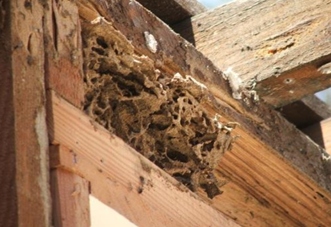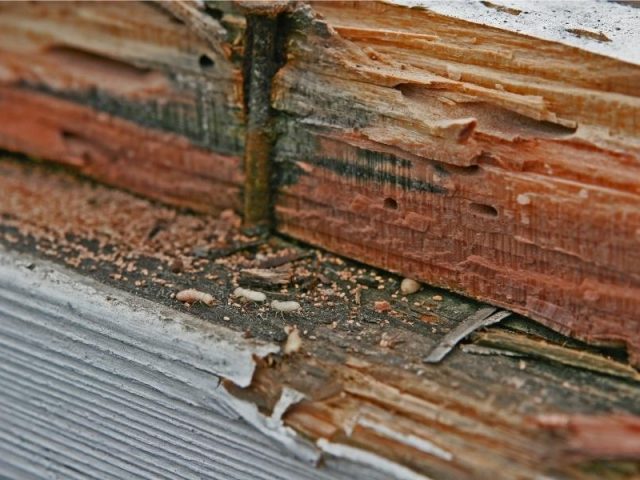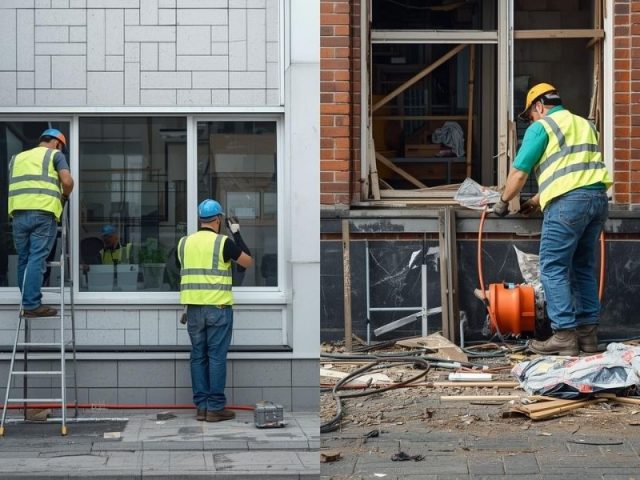Blog
Introduction
In the field of property and building management, pest control is a crucial yet often overlooked component. Whether managing residential, commercial, or industrial buildings, pest issues can quickly lead to secondary problems such as water leaking repair needs, wall cracks, roof leaking, and even damage to waterproofing systems. Pests like termites and rodents often worsen hidden structural weaknesses, affecting areas such as toilets, balconies, roofs, and service shafts.
In many cases, untreated pest infestations eventually contribute to issues that require waterproofing repair, PU injection, grouting, wall repair, and other building repair work. As urbanisation and climate factors continue to evolve, pest-related problems and their associated repair requirements are becoming more frequent. Therefore, consistent and proactive pest management is essential not just for hygiene and safety, but also for minimising long-term structural deterioration that may otherwise require major repairs.

Why We Need To Maintain Regular Pest Control
- Safeguarding Health and Hygiene
Pests are the carriers of disease, transmitting bacteria, viruses, and parasites that can seriously threaten the health of building occupants. For example, cockroaches are known to trigger allergies and asthma attacks, particularly in children. Rats and mice are notorious for spreading diseases such as leptospirosis, hantavirus, and salmonella, while mosquitoes are vectors for dengue, Zika, and malaria [2]. The presence of pest droppings, shed skin, and dead insects can contaminate air quality and food sources, leading to significant health risks.Regular pest control helps identify and address these health threats early. Professional exterminators perform routine inspections and use environmentally safe pesticides or traps to eliminate current infestations and prevent future ones. Additionally, integrated pest management strategies focus on prevention through proper sanitation, building maintenance, and the responsible use of chemicals [3]. This comprehensive approach reduces the need for reactive extermination and promotes a healthier indoor environment.
Preserving Building Structure and Infrastructure
Beyond health concerns, pests like termites, carpenter ants, and rodents can cause devastating damage to a building’s physical structure. Termites, in particular, feed on cellulose found in wood and can compromise the integrity of wooden beams, floors, and walls if left unchecked. According to the National Pest Management Association, termites cause more than USD 5 billion in property damage annually in the United States alone, let alone in other countries. Moreover, the building damage caused by termites is often not covered by insurance [4].

Figure 2: Termite Damage on Building Structure [5]
Rodents pose a different kind of threat. They chew on electrical wiring, insulation, and plumbing pipes, increasing the risk of electrical fires and water leaks. Pests can also clog drainage systems and damage HVAC systems, leading to costly maintenance and downtime. Regular pest control inspections can detect early signs of such structural vulnerabilities, allowing for timely repairs and interventions that preserve the long-term value of the property.Ensuring Compliance with Health and Safety Regulations
Building owners and managers are legally responsible for providing safe and habitable environments for occupants. Local councils, health departments, and environmental authorities often have stringent guidelines regarding pest management, especially for buildings with food preparation areas, healthcare facilities, and schools. Failure to comply with these regulations can result in fines, forced closures, or legal liability if occupants suffer health issues due to negligence.
In Malaysia, for example, the Destruction of Disease-Bearing Insects Act 1975 and local by-laws require buildings to be maintained in a manner that prevents pest breeding [6]. Many jurisdictions worldwide have similar legal frameworks that mandate pest control as part of public health efforts. Regular pest control, therefore, is not only a best practice, it is often a legal requirement. Proactive compliance protects property owners from penalties and ensures the continued operation of the building without disruption.
Enhancing Occupant Satisfaction and Property Reputation
Building tenants, whether residential or commercial, expect clean, safe, and pest-free environments. The presence of pests or sightings of infestations can lead to negative reviews, tenant complaints, and even loss of tenancy. In commercial buildings, pests can adversely affect staff morale and productivity. For retail or hospitality businesses, pest issues can damage customer trust and harm brand reputation.
Research indicates that tenant retention in high-rise apartments is significantly correlated with building cleanliness and effective pest control measures [7]. Consistent pest management contributes to a better living and working experience, resulting in higher tenant satisfaction and occupancy rates. Building managers who invest in pest control demonstrate professionalism and care, which reinforces the property’s reputation and enhances its marketability.
Reducing Long-Term Maintenance Costs
While some building managers may view pest control as an avoidable cost, the reality is that neglecting pest prevention often leads to more expensive repairs and emergency responses. A single untreated termite infestation, for example, can result in tens of thousands of dollars in reconstruction costs. Emergency pest treatments are also more expensive than routine preventive measures.
By implementing a regular pest control schedule, building managers can budget predictable maintenance costs and avoid unforeseen damages. Early detection and intervention reduce the scope of infestations, limit the need for major renovations, and extend the lifespan of the building’s fixtures and infrastructure. In the long run, pest control is a cost-saving investment rather than a financial burden.
- Safeguarding Health and Hygiene
Conclusion
Regular pest control is a fundamental part of modern building management, helping protect both the occupants and the building’s structural components. When pests are left unmanaged, they can contribute to issues such as wall cracks, roof leaking, toilet leaking, and moisture intrusion, problems that often require specialised solutions like PU injection, grouting, waterproofing repair, or roof repair. Effective pest management minimizes the likelihood of costly building repairs, reduces the need for emergency interventions, and ensures that defects are identified before they escalate into major structural concerns.
By integrating routine pest inspections with other preventive maintenance practices such as concrete scanning, coring tests, and general building repair assessments, property managers can create a safer, more durable, and better-performing built environment. In the long run, proactive pest control supports the overall health of the building and reduces the need for extensive repair work carried out by waterproofing specialists, repair specialists, or waterproofing contractors. Ultimately, maintaining a consistent pest control programme is essential for preserving building integrity, functionality, and long-term value.
References
[1] CM Account & Services. (n.d.). Pest control. Retrieved on 25th April 2023 from https://www.cmaccount.my/services/pest-control/
[2] World Health Organization. (2020). Vector-borne diseases. Retrieved on 25th April 2023 from https://www.who.int/news-room/fact-sheets/detail/vector-borne-diseases/
[3] Environmental Protection Agency (EPA). (2021). Introduction to Integrated Pest Management (IPM). Retrieved on 25th April 2023 from https://www.epa.gov/ipm/introduction-integrated-pest-management/
[4] National Pest Management Association (NPMA). (2022). Termite Damage Facts and Statistics. Retrieved on 25th April 2023 from https://www.pestworld.org/news-hub/pest-articles/termites-damage-costs/
[5] Mydin, M.A.O. & Nawi, M.N.M & Munaaim, M.A.c. (2017). Investigation of rising damp and salt attack problems of heritage buildings. Malaysian Construction Research Journal. 2. 151-165.
[6] Government of Malaysia. (1975). Destruction of Disease-Bearing Insects Act 1975 (Act 154). Laws of Malaysia. Retrieved on 25th April 2023 from https://www.moh.gov.my/index.php/database_stores/attach_download/317/7
[7] Evo Property Management. (2022). The tenant experience and why it matters. Retrieved on 25th April 2023 from https://evo-pm.com/insights/the-tenant-experience-and-why-it-matters/



